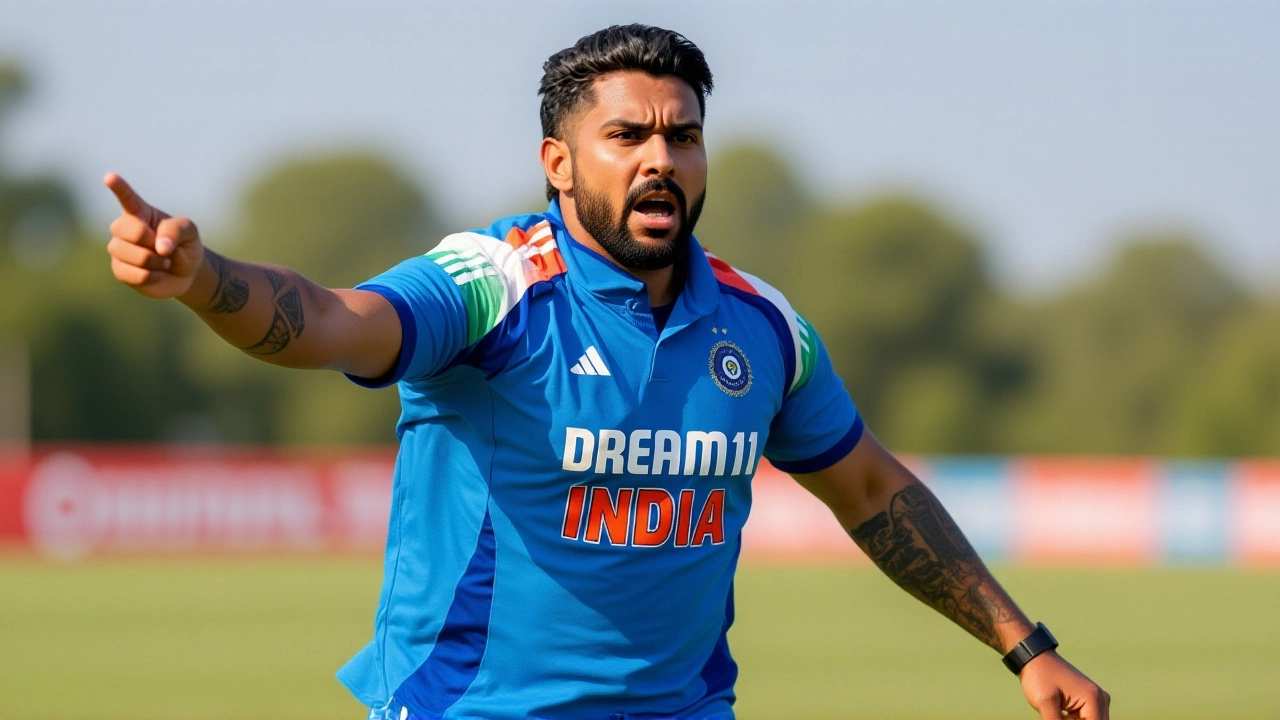India Australia ODI – Highlights, Stats and Stories
When you talk about India Australia ODI, the limited‑overs clashes between India and Australia in the One Day International format. Also known as Ind‑Aus ODI, it represents one of cricket’s fiercest cricket rivalry that has produced iconic chases, sudden collapses and unforgettable celebrations. These contests are played under One Day International (ODI), a 50‑over‑per‑side format that blends aggressive batting with tactical bowling. India Australia ODI fans know that every fixture carries history, pressure and the promise of a new classic.
The rivalry’s story is built on a few core elements. First, the batting firepower: Indian legends like Virat Kohli and Rohit Sharma have repeatedly chased down targets set by Australian bowlers, while Aussie greats such as David Warner and Aaron Finch have chased under lights in India. Second, the bowling tactics: India's spin maestros, especially Ravindra Jadeja, often exploit Australian batting weaknesses, whereas Australia’s fast‑bowling brigade—Mitchell Starc, Pat Cummins—targets India’s top order with sheer pace. This combination of batting aggression and bowling strategy creates a dynamic where each side adapts quickly, making every match a lesson in cricketing chess.
How the ODI Format Shapes the Ind‑Aus Battles
The 50‑over structure forces teams to balance risk and reward. Early overs focus on building a solid platform; the middle phase sees accelerated scoring; the final ten overs become a sprint. In India‑Australia ODIs, this rhythm often flips. Australia tends to set a high total using aggressive opening partnerships, while India prefers a calculated chase, relying on partnerships that steady the innings before launching a late‑over onslaught. The format also influences selection: both boards prioritize all‑rounders who can swing the momentum in tight moments. As a result, players like Hardik Pandya and Glenn Maxwell become pivotal, providing both batting depth and a few crucial overs.
World Cup tournaments have amplified the rivalry’s intensity. When the two sides meet on the sport’s biggest stage, the stakes jump from bilateral pride to global relevance. Matches at the 2015 and 2019 World Cups highlighted how pressure shapes performance—India’s disciplined chase versus Australia’s explosive start. These encounters have driven innovations in field placements, power‑play tactics, and even video‑analysis methods. Coaches now study opponent patterns from previous ODIs, turning data into on‑field decisions that can turn a draw into a win.
Fans and broadcasters treat India‑Australia ODIs as marquee events. Television ratings surge, social media trends explode, and stadiums fill beyond capacity. The cultural impact goes beyond numbers; it fuels grassroots interest, inspires young cricketers, and fuels holiday travel as supporters flock to venues like Melbourne Cricket Ground or Bengaluru’s M. Chinnaswamy Stadium. This fan‑driven energy pushes both boards to schedule more bilateral series, ensuring the rivalry stays fresh and commercially viable.
All these angles—format nuances, player roles, World Cup pressure, and fan passion—come together to define what makes the India Australia ODI series so compelling. Below you’ll find a hand‑picked collection of articles that dive deeper into match analysis, player performances, historical moments and upcoming fixtures. Whether you’re a seasoned follower or new to the rivalry, the stories ahead will give you a richer view of why these encounters matter in today’s cricket landscape.

Aakash Chopra Pushes for Harshit Rana as India Stumbles in Perth ODI
Aakash Chopra backs Harshit Rana for India's opening ODI in Perth; after a rough debut, the young pacer redeems himself in Adelaide, sparking debate over India's pace options.